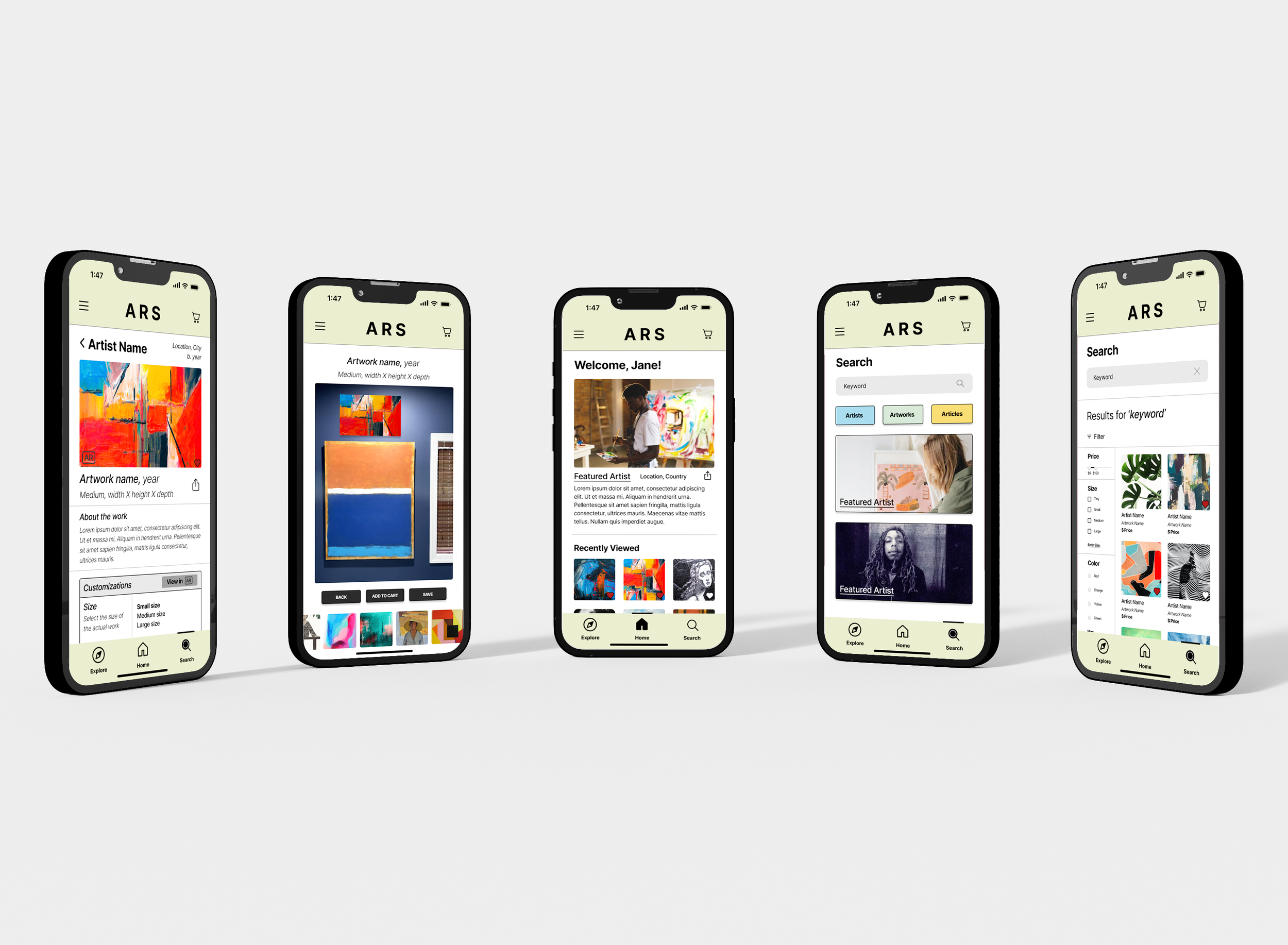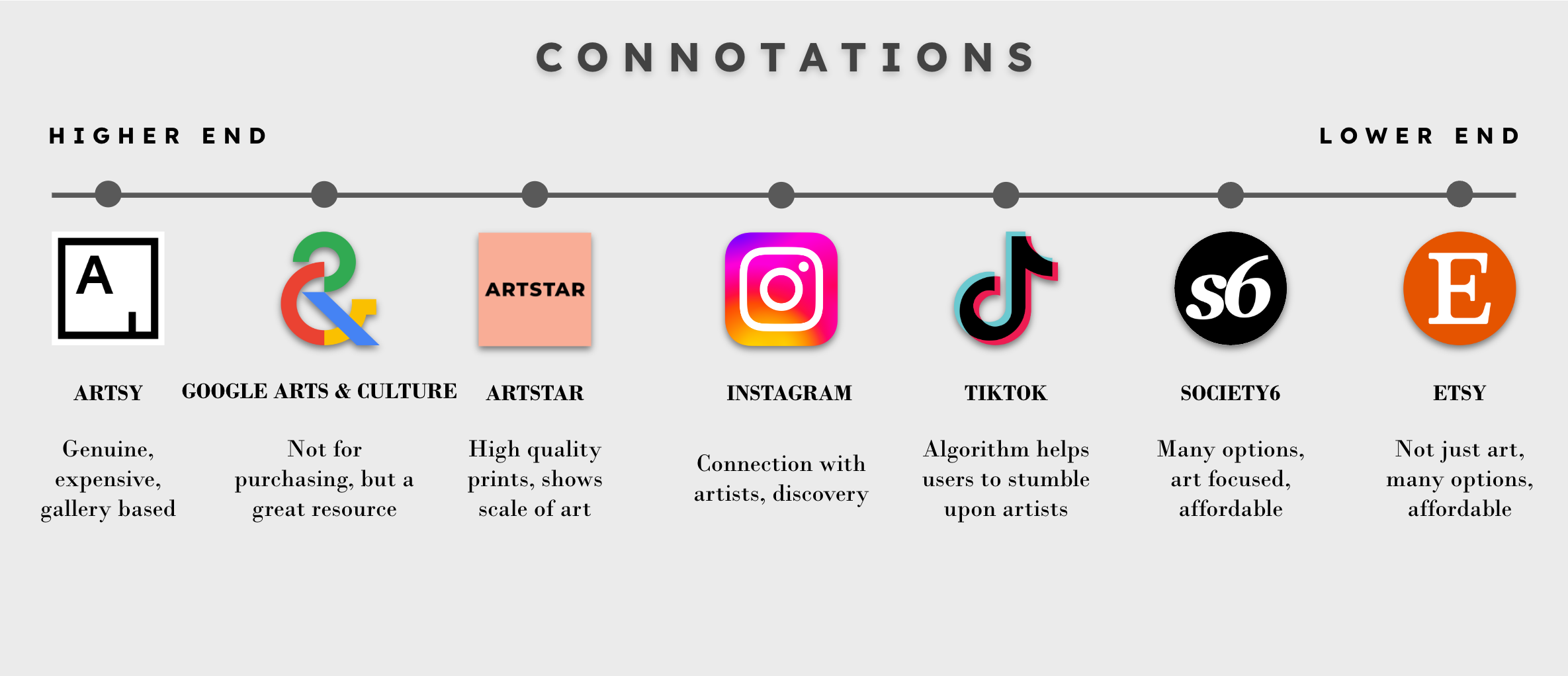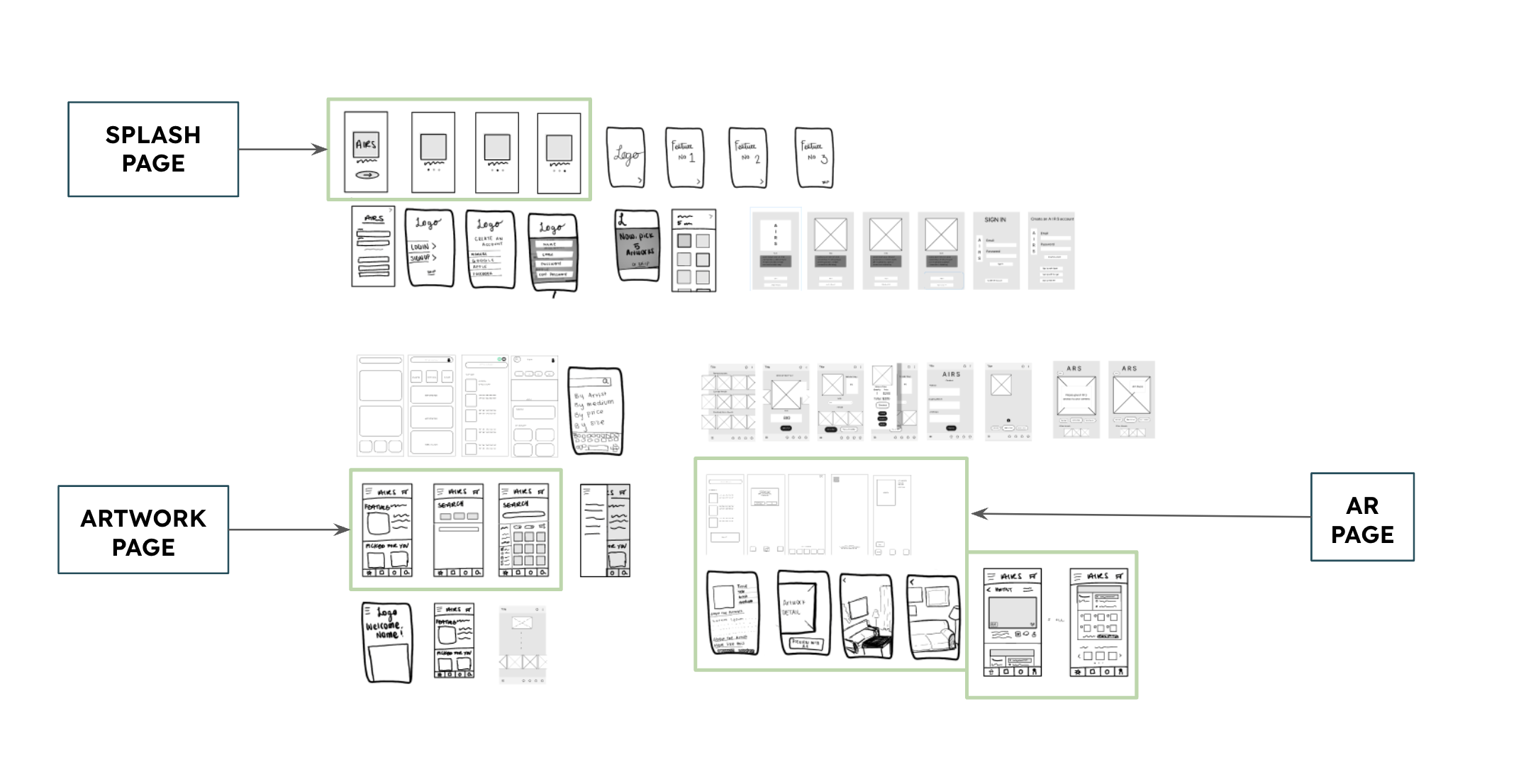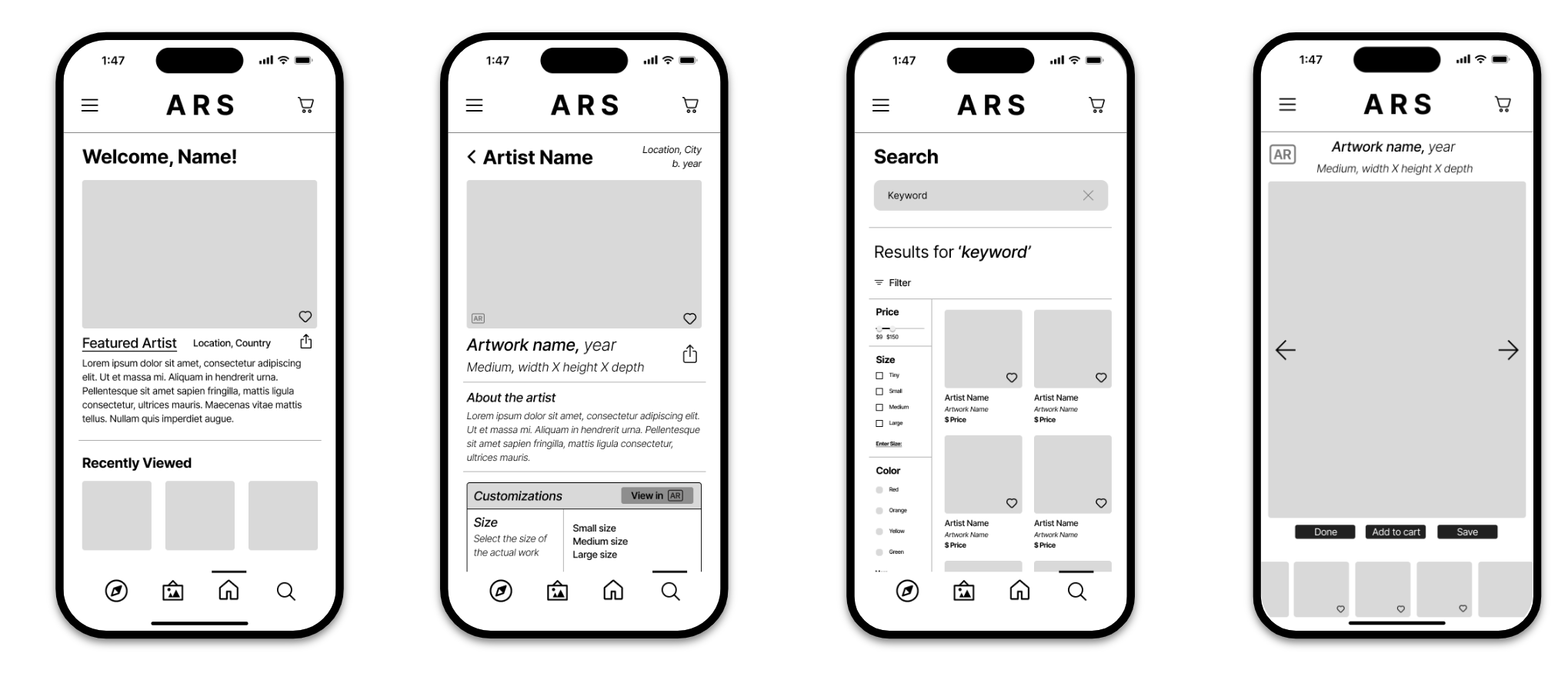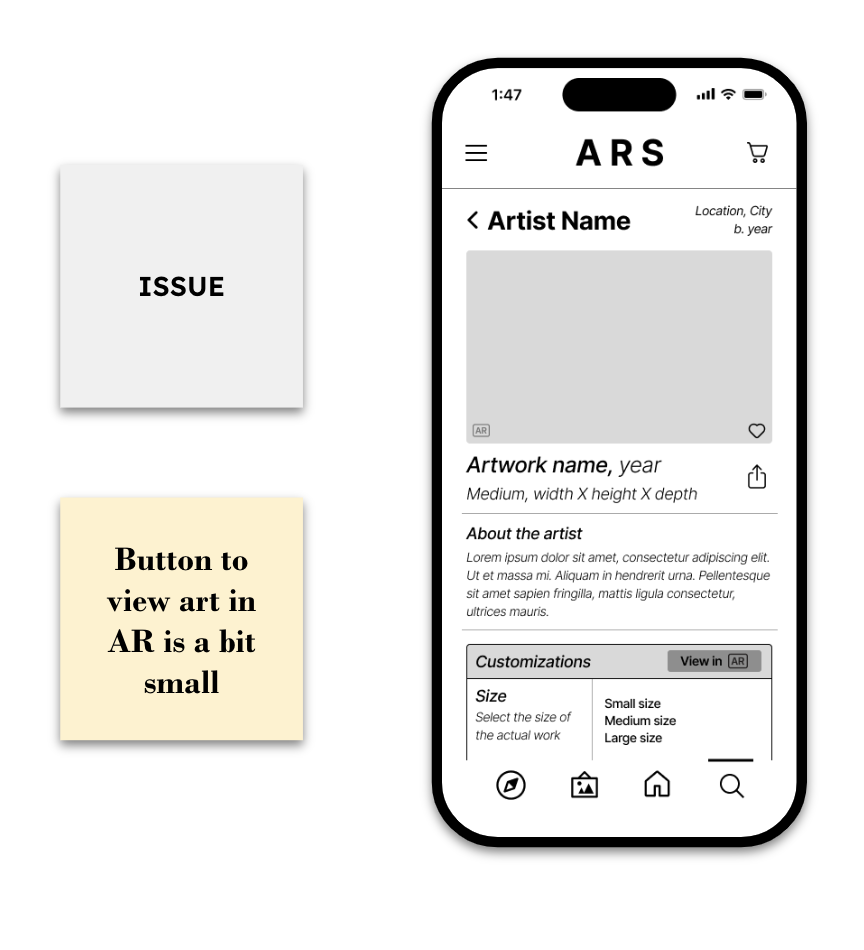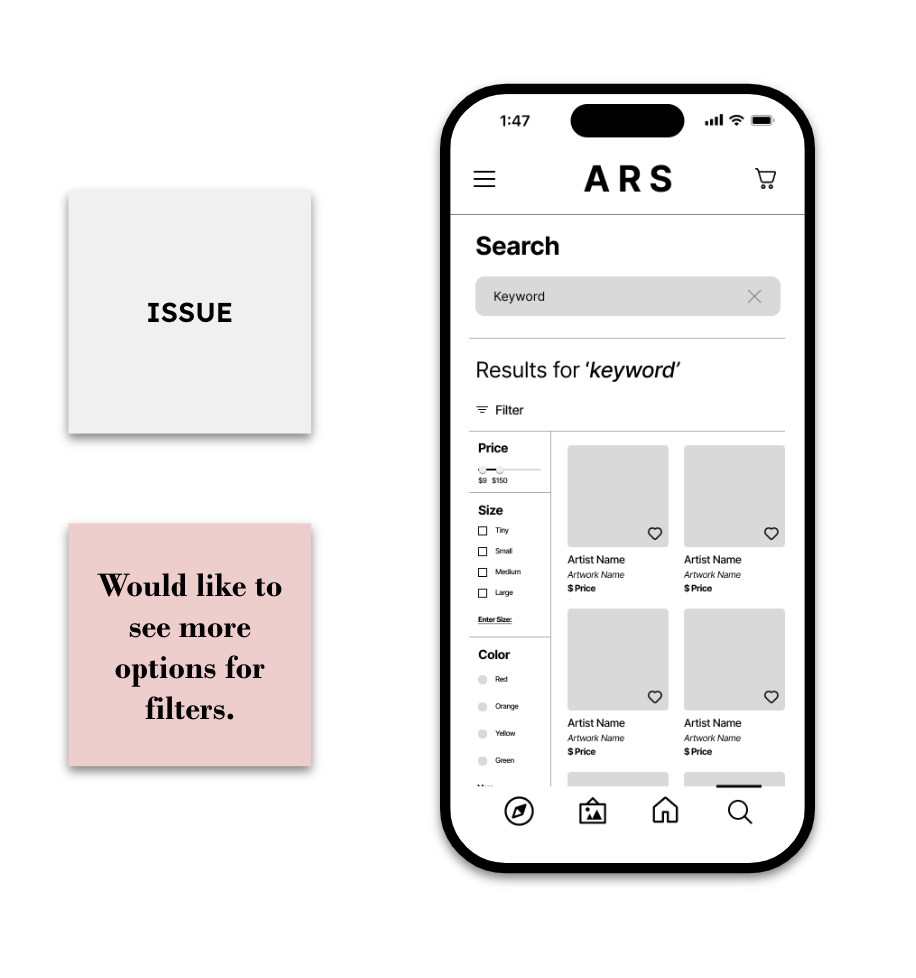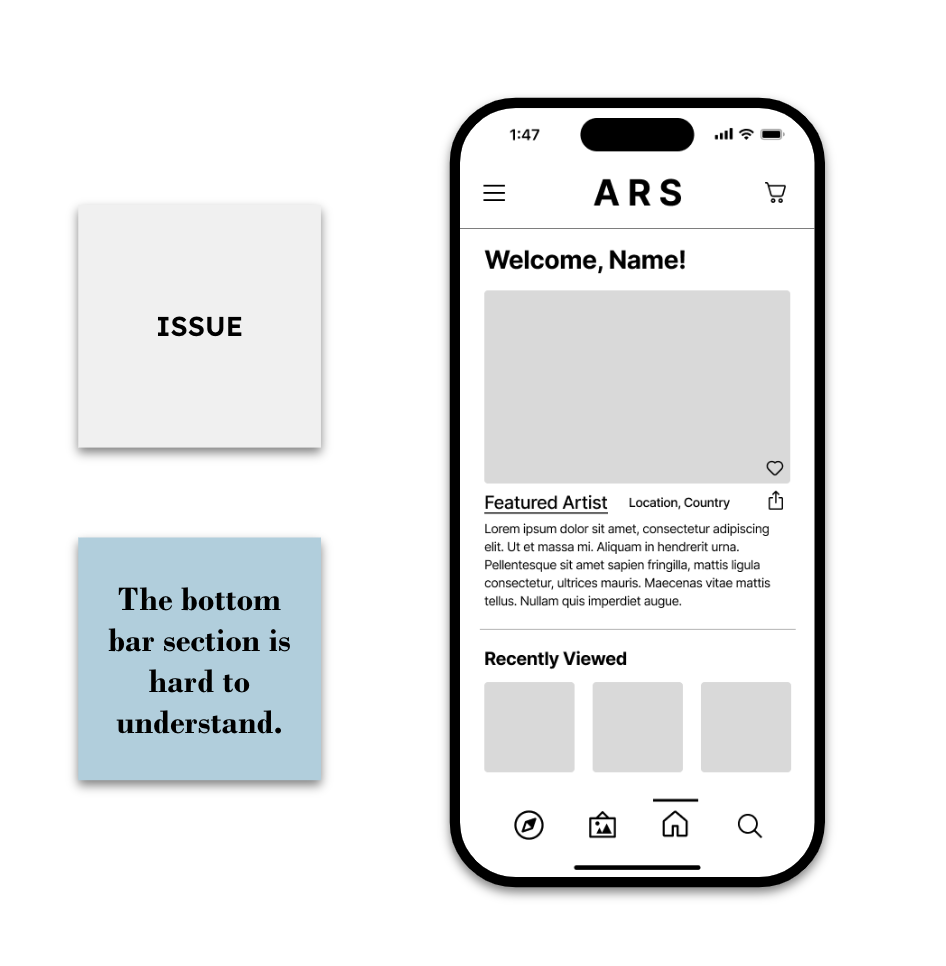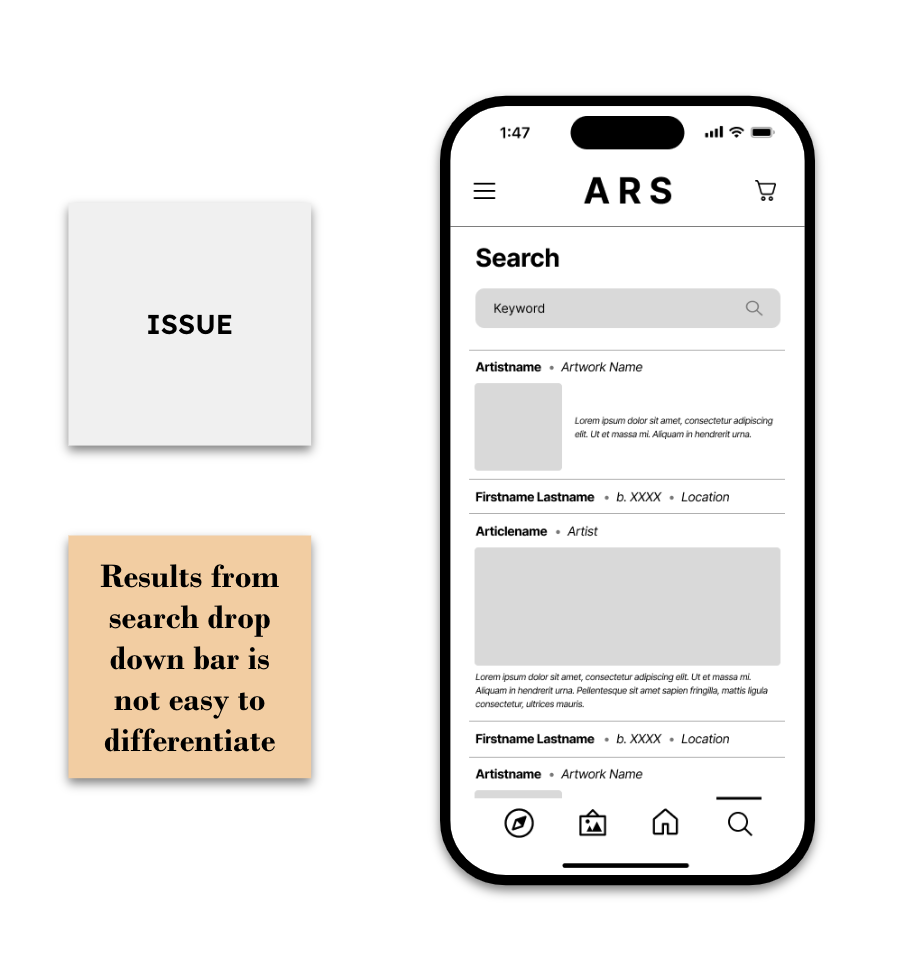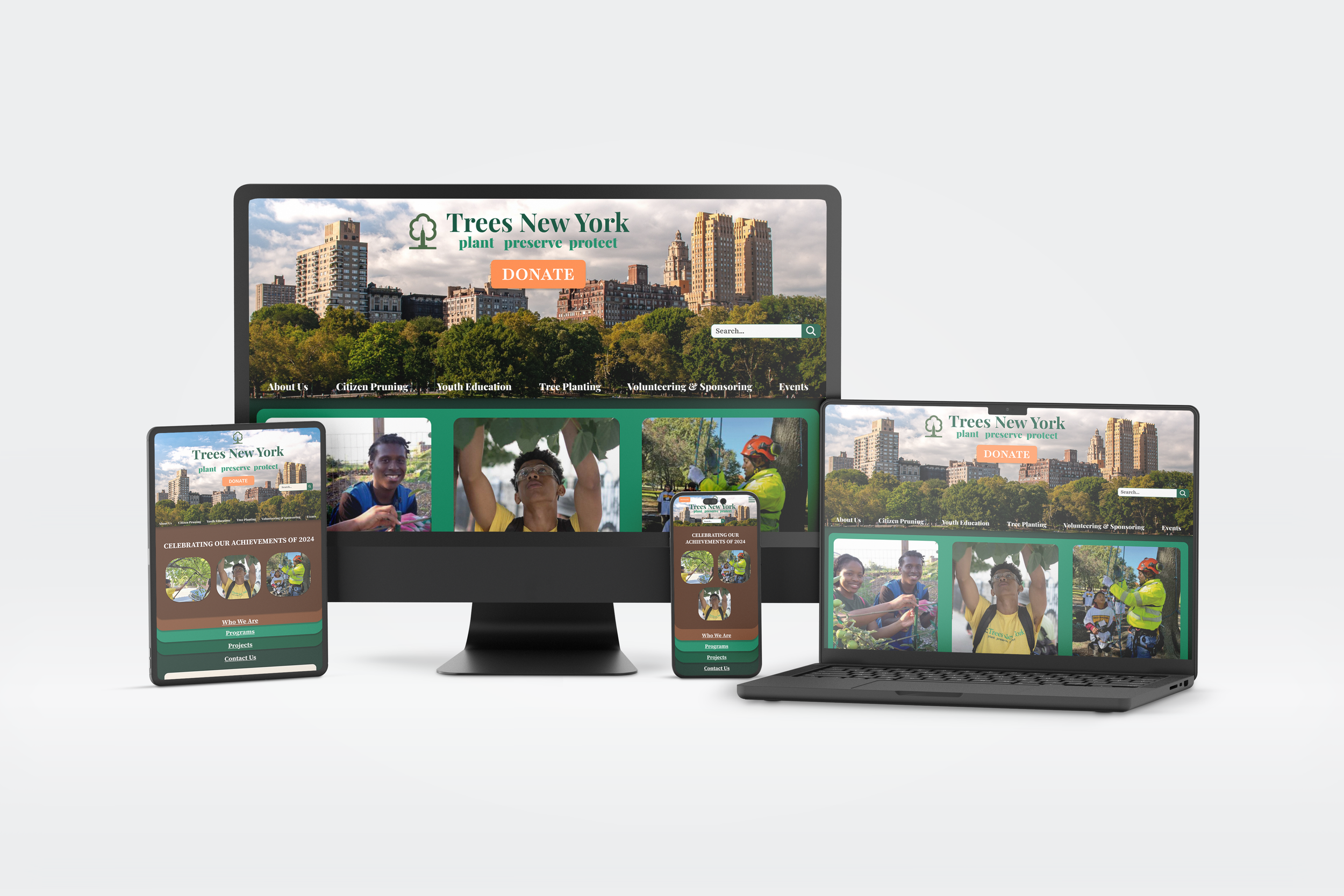ARS: Bringing AR to Art Discovery
Our users require efficient methods to discover artworks within their budget without sacrificing quality. They often struggle with organizing their search and visualizing how the artwork will complement their space. They lack personalized recommendations aligned with their preferences.
Problem
We plan to create a mobile application providing users with the capability to preview artworks in their own living spaces. It also offers recommendations and introduces artists with styles akin to those admired by the user, across a diverse range of price points.
Approach
Bola Fapohunda
Minsie Kim
Cristina Samper
Charlie Krawcel
Team
Figma
Figjam
Google Slides
Tools
Emphasize
General Ideas
When our group embarked on our collaborative journey, our shared passion for art steered us towards the creation of an art app. With diverse tastes spanning various artistic styles, we began by brainstorming ideas to shape the app's focus. Here are the 4 pivotal concepts we aimed to integrate into our project:
1. Spotlight POC artists
2. Focus on Digital Art.
3. Design a way to see the art in YOUR apartment in different lighting
4. Create AI to recommend buyers on "similar artworks" based on previous purchases
Competitive Analysis
Following a brainstorming session, we selected seven companies for a competitive analysis, aiming to gain deeper insights into the art app landscape. We made a grid showing the spectrum between those with a strong emphasis on art and those with a more expansive focus. We decided we would position ourselves between ARTSTAR and Instagram because we hoped to facilitate art enthusiasts in discovering and following loved artists, all the while ensuring access to top-tier, high-quality art.
To gain insights into user sentiments regarding art purchases and gather potential app enhancement ideas, I conducted interviews with five individuals spanning ages 26 to 62. My aim was to determine 4 things:
Their feelings on art and their thoughts on purchasing art.
What percent of their budget do they set aside for art purchases.
Could they name 3 of their favorite artists and how did they find these artists.
Do they understand the concept of Digital Art.
I discovered that a majority of those interviewed did not have a clear understanding of purchasing Digital Art. Although we wanted to our app to be specific to a certain type of art, we decided to widen our range so we could better help more art seekers.
Interviews
Define
In developing the A R S app, our attention centered on three primary flows: Onboarding Flow, Search Flow, and AR/Purchase Flow. By creating these flows, we can more effectively discern which pages to include in our prototype.
User Flows
Ideate
Sketches
We then began our design process by putting together our page designs for A R S. We did a set of two for each section so that we had options for when we chose the final designs. You can see the specific pages we wanted to use highlighted in green rectangles.
Prototype & Test
Mid-Fidelity Wireframes
We updated our sketches into Mid-fidelity wireframes. The photo below shows the key features of our app: a homepage with a featured artist, an in-depth artist page for the user to get to know the artist, the search process with multiple filters, and the AR page.
Here are the issues we found during testing:
Testing
Solutions to the issues: To enhance user experience, we labeled the icons in the bottom bar for clearer navigation. Additionally, we enlarged the AR button, modified "Payment Received" to "Order Confirmed," and expanded the options available in our filter section.
Final Mid-Fidelity Prototype
After determining the solutions to our usability concerns, we developed a final mid-fidelity prototype. As evident in the prototype, we ensured to showcase visually striking artwork that aligns with the type featured on our app. We also highlighted the key AR function, and our in-depth search process.
Conclusions & Opportunities
The results of our research confirmed what we already had in the back of our minds - social media and online platforms have solidified themselves as a major platform for discovery of arts and culture. Looking back on our work so far, we saw just how many more opportunities exist for our app moving forward:
Further testing of the mid-fi prototype to collect more qualitative and quantitative information about color, layout, etc.
Interview up-and-coming artists to see how their perspective would affect how the app functions
Find out how we can integrate social media into our app in a non-intrusive way
Explore the best way to include framing and mounting services - artists can provide their own services at a lower cost to the buyer
Thanks for reading!

